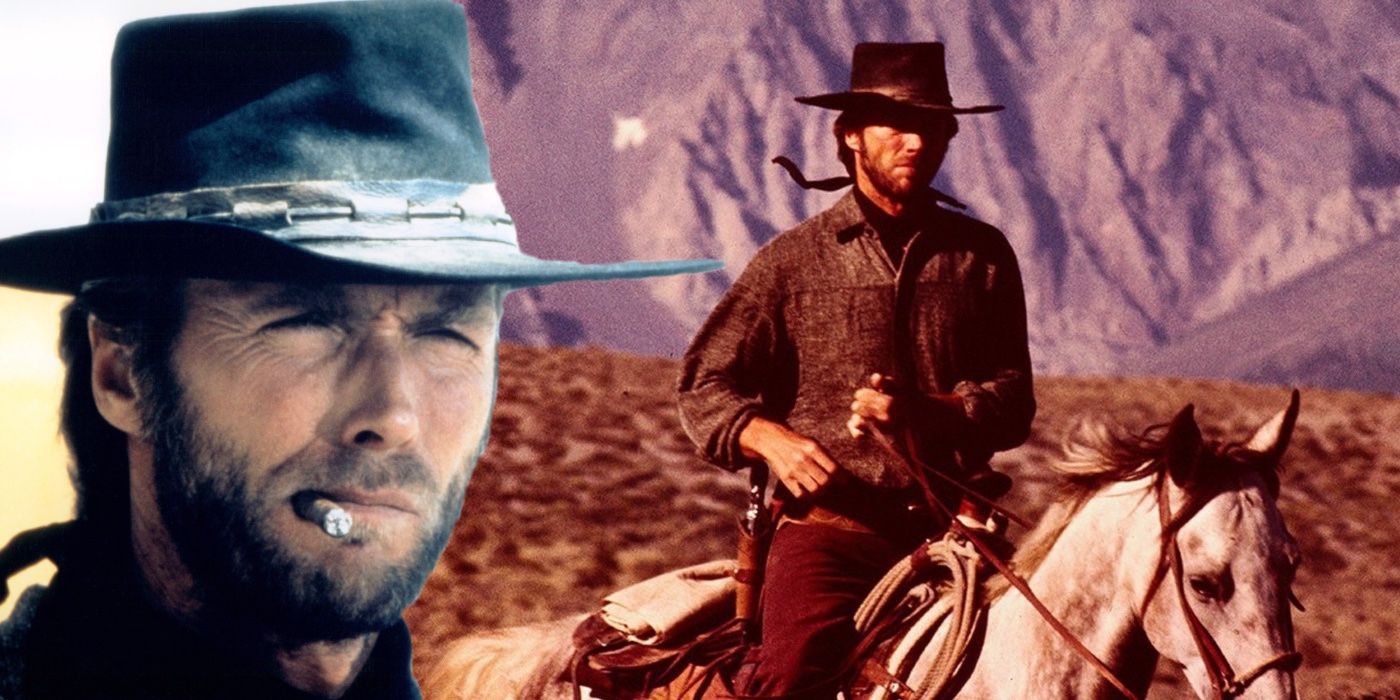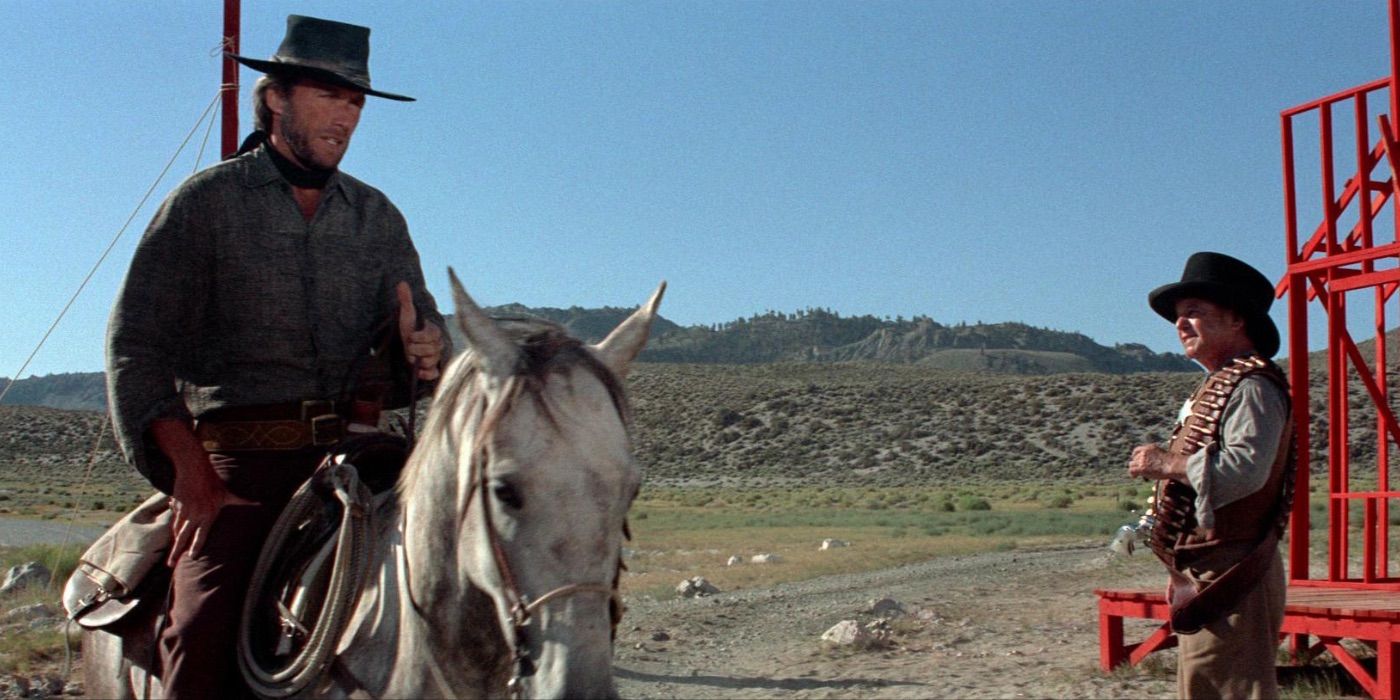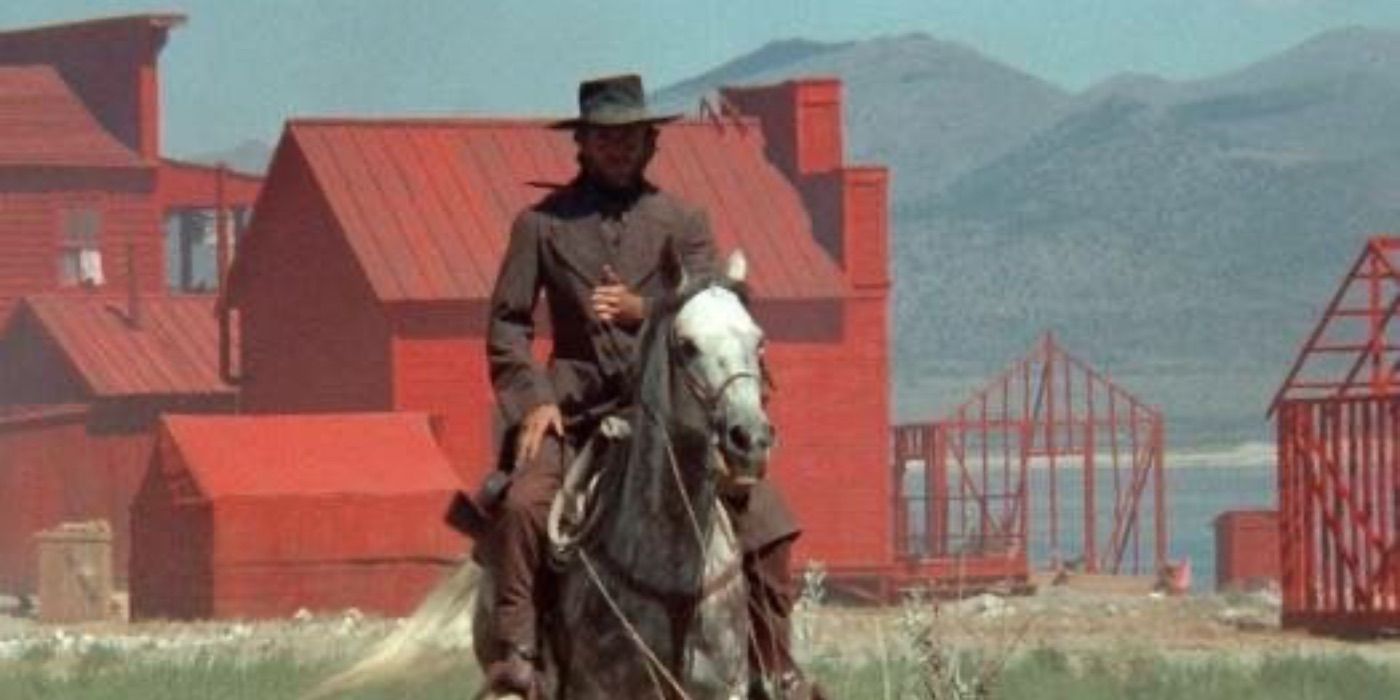The locations in Clint Eastwood’s classic revisionist Western drama High Plains Drifter are pivotal to the story, but where exactly was the movie actually filmed? Met with high critical praise upon its initial release in 1973, High Plains Drifter involves a perplexing blend of genres that see the Western auteur step out of his comfort zone. As with many classic Western films, High Plains Drifter features stunning vistas and locations that are not only evocative of history but of the landscape mentioned in the movie’s title. Even so, there is more to the movie’s locations than what’s on the surface.
Eastwood not only directed but also stars in High Plains Drifter, and the filmmaker’s bleak vision of revenge and anti-heroism was in stark contrast to the classical icons of older Westerns. Stylized and allegorical, the choice to set the film in the High Plains was not by accident, and the almost alien landscape was the perfect backdrop for the story being told on screen. Despite its challenging tone, High Plains Drifter was a box office hit and grossed $15 million (via Box Office Mojo), and it has gone on to be revered among Clint Eastwood’s Western movies as a certified classic.
High Plains Drifter Was Filmed In Mono County, California
Despite its title, which makes reference to a real region of the United States, High Plains Drifter was not actually filmed on the High Plains. Instead, the movie was shot entirely on location in the sparsely populated California county of Mono. As mentioned in Howard Hughes’s indispensable book Aim for the Heart: The Films of Clint Eastwood, many locations around the county were utilized for the filming, including the shores of Mono Lake where the bulk of the film’s city scenes took place. Interestingly, Mono County, California, is visually distinct from the actual High Plains, and that affected the tone of the film.
The real High Plains are mostly flat, with rolling hills and a trademark grassland that was historically dotted by buffalo in years past. The locations of High Plains Drifter are much rockier and barren, which gives the viewer a sense of alienation as the landscape seems less hospitable. Other than the ease of filming a movie closer to Los Angeles, Mono County gave Clint Eastwood a more interesting canvas to paint on, and it ultimately played into the film’s eerie ghostlike tone.
The Town Of Lago Was Built Specifically For The Movie
The fictional town of Lago was the setting for Clint Eastwood’s performance as The Stranger as he meted out his own brand of revenge. Unsurprisingly, Lago was actually a set that was built on the shores of Mono Lake to accommodate the filming of High Plains Drifter. With so much untamed wilderness in the county of Mono, the construction of a set was the only way for Lago to come to life, and the building of entire towns for the purpose of filming is nothing new in the history of cinema.
A set allows filmmakers to have greater control over the environment of the production, and the fake nature of the buildings allows for things to be moved or rearranged for ease of use. Besides that, the faux nature of Lago helped add to the film’s surreal and dreamlike tone. Erected on the edge of a massive lake, High Plains Drifter‘s primary filming location was realistic, but it was also specifically tailored to look as compelling as possible. Westerns have always been about their visual appeal, and High Plains Drifter was no exception.



